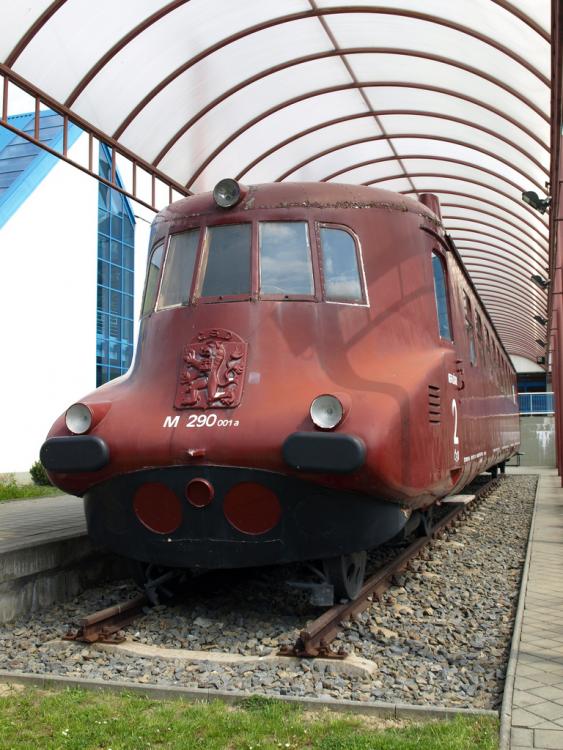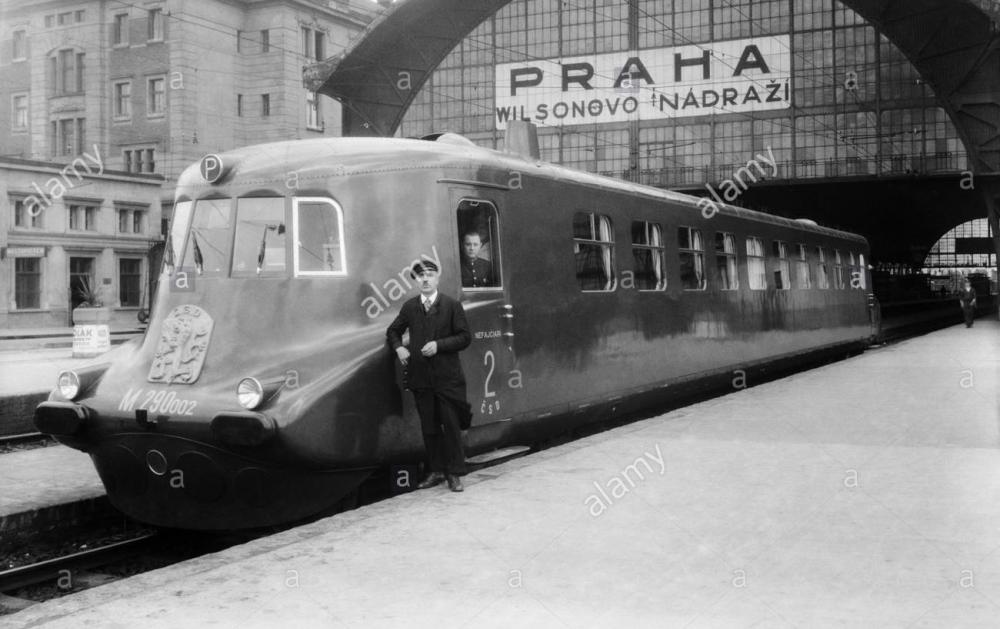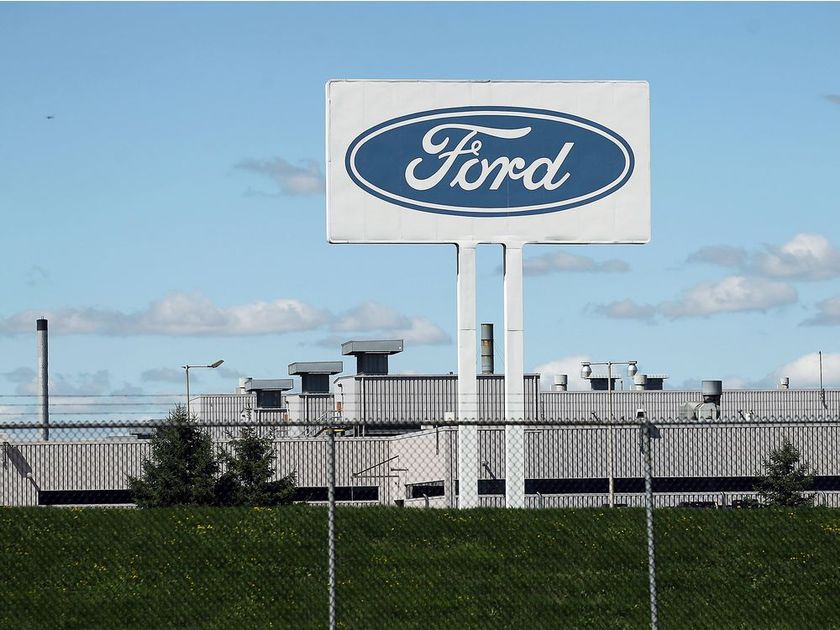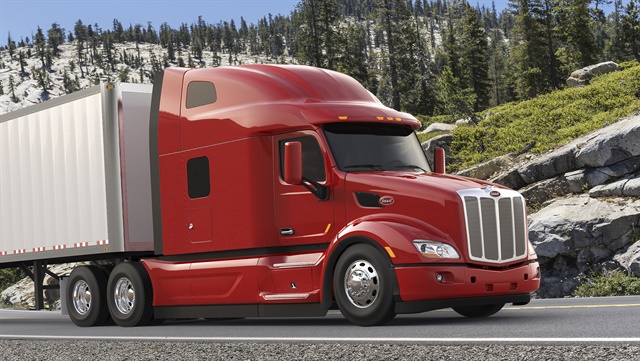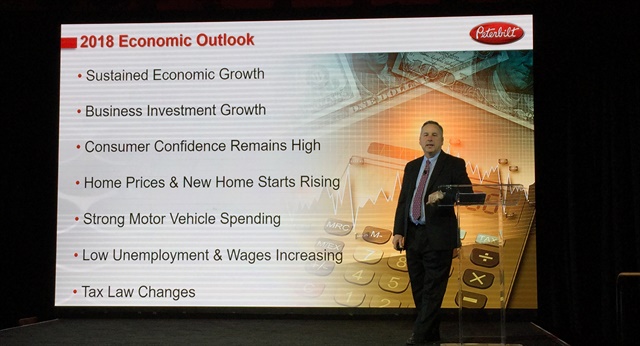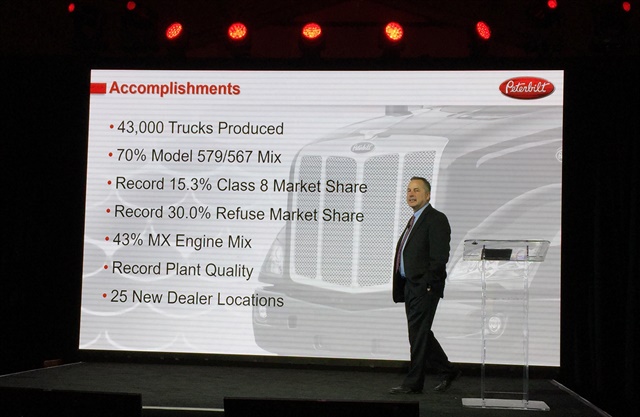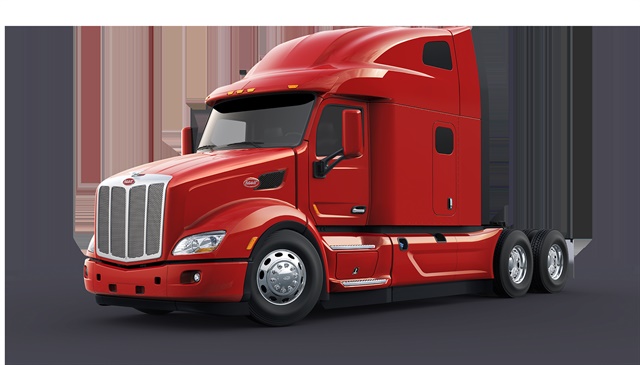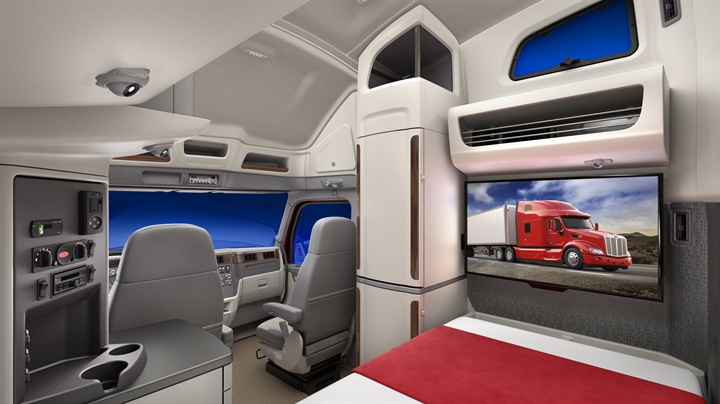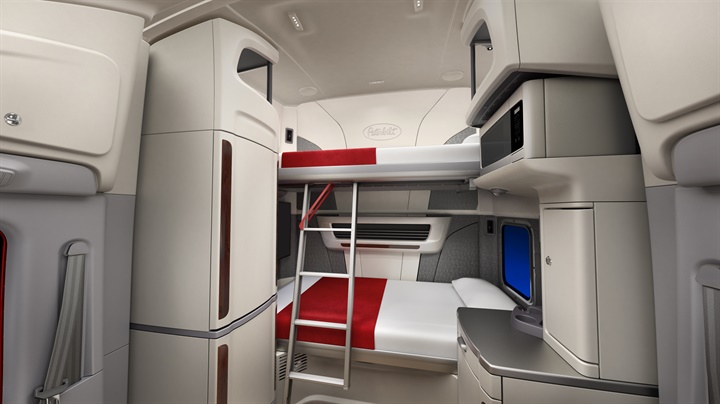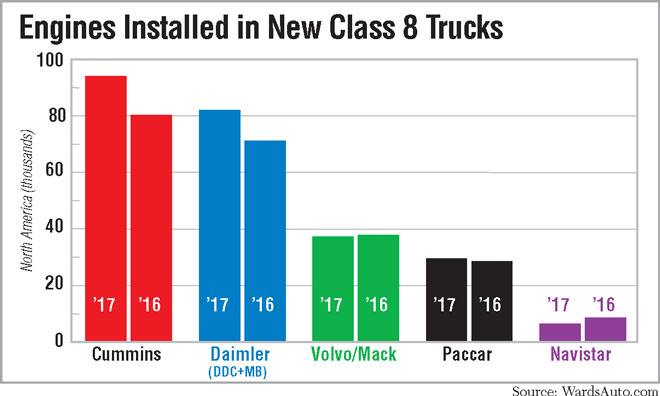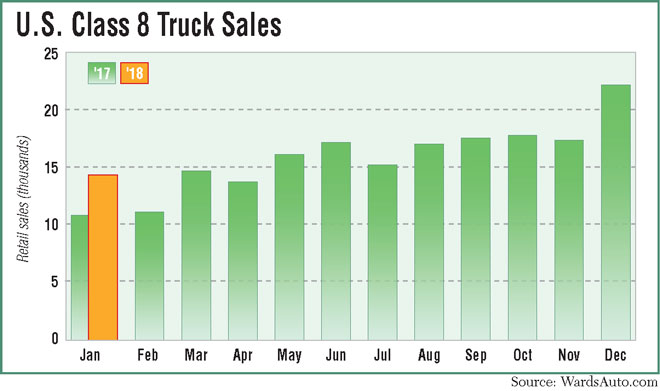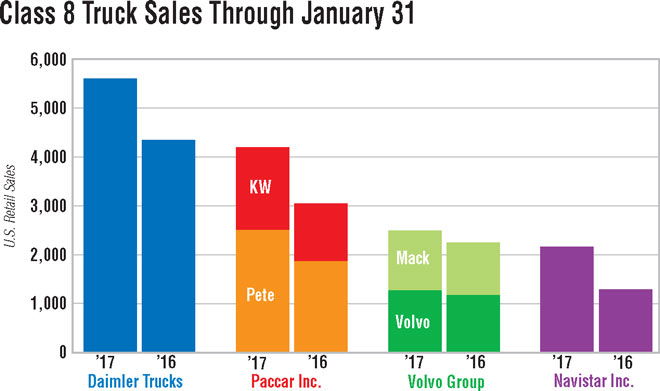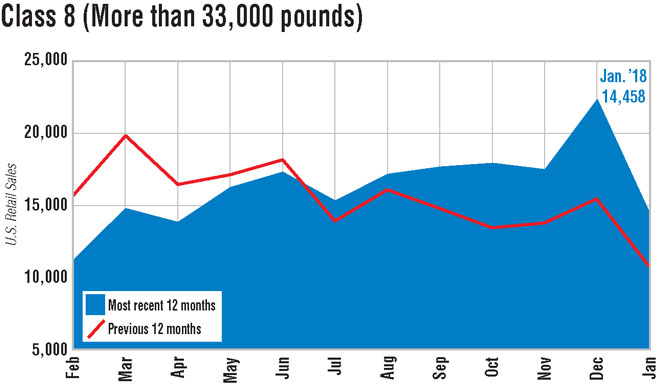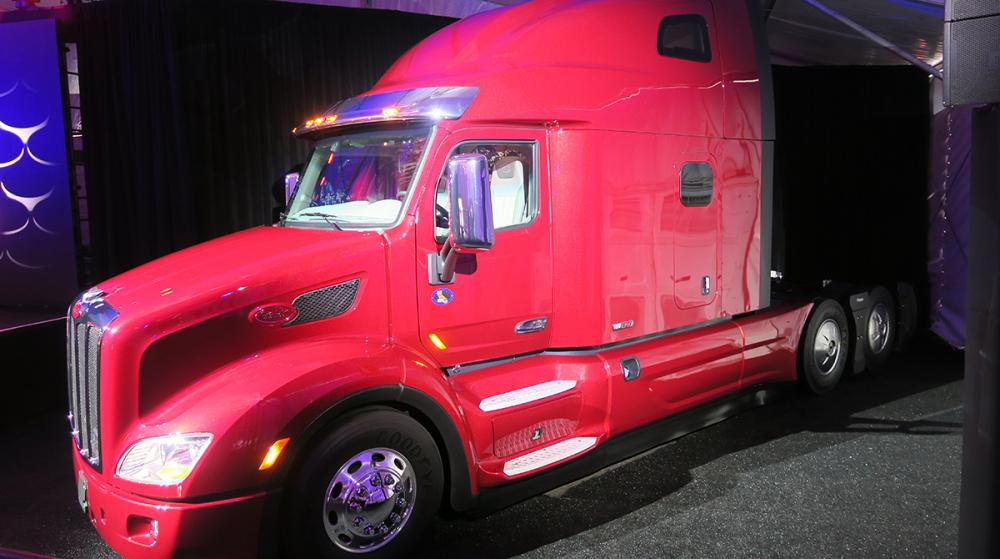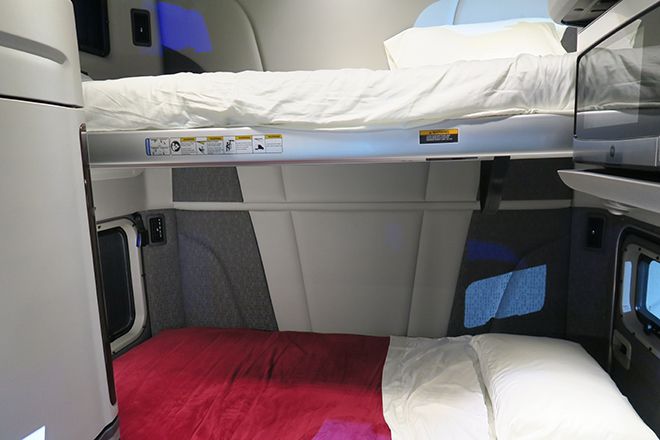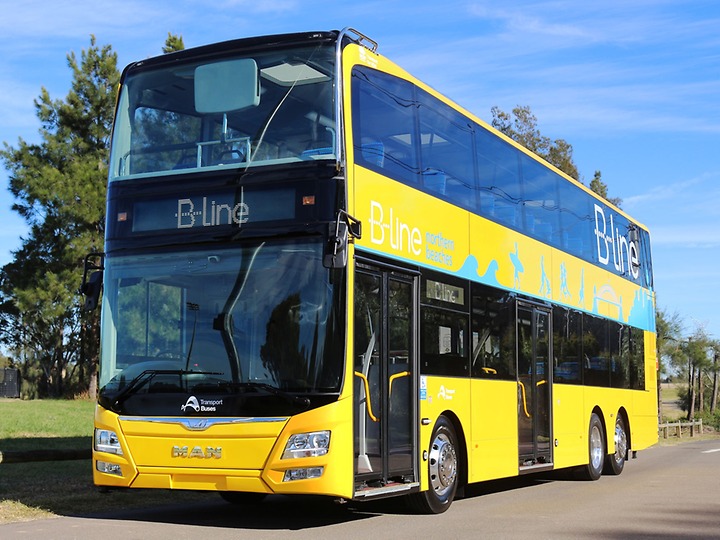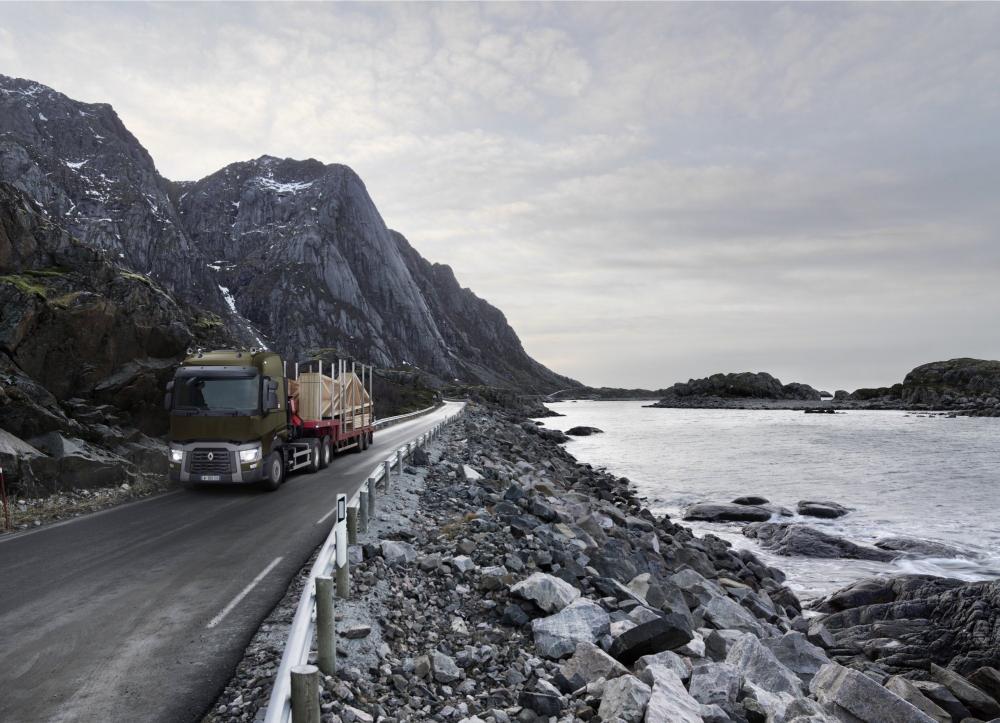
kscarbel2
Moderator-
Posts
17,892 -
Joined
-
Days Won
86
Content Type
Profiles
Forums
Gallery
Events
Blogs
BMT Wiki
Collections
Store
Everything posted by kscarbel2
-
TATRA TRUCKS to restore legendary ‘Slovak Bullet’ locomotive
kscarbel2 replied to kscarbel2's topic in Trucking News
I'm thrilled this historic piece of rolling stock will be restored for future generations. However, having said that, I don't understand why the European Union (EU) is paying for 85 percent of the work. This is a Czech domestic project. -
Fiat Chrysler to recall 228,508 trucks to fix shifter issue Reuters / February 16, 2018 Fiat Chrysler Automobiles said on Friday it would recall about 228,508 trucks in the United States, Canada, Mexico and some other markets to prevent drivers from unintentionally shifting their vehicles out of "park." The brake transmission shift interlock (BTSI) may overheat on some vehicles, FCA US LLC said, adding that it would cause the shifter to be repositioned without brake-pedal application, or the presence of a key in the ignition. The overheating occurs when a driver keeps a foot on the brake while the car is idling in park. FCA said the recall includes certain 2017-18 Ram 2500 and 3500 pickups; certain 2017-18 Ram 3500, 4500 and 5500 chassis cabs; and 2016-17 Ram 3500 chassis cabs that weigh less than 10,000 pounds. The company also said some 2017-18 Ram 1500 pickups are included in the campaign, "but heavy-duty trucks represent the majority of affected vehicles." The company said it is unaware of any injuries or accidents related to this recall, which is limited to vehicles equipped with gear shifters on their steering columns. In December, the company said it would recall about 1.8 million trucks in the United States, Canada, Mexico and some other markets to fix a part that if not operating could allow the driver to shift out of park without depressing the brake pedal.
-
Florida High School Shooting - 17 confirmed dead
kscarbel2 replied to kscarbel2's topic in Odds and Ends
I firmly believe that if killers knew that, in cases with witnesses and/or cameras that verified their guilt, they would be subject to an immediate death penalty, we could change the tide. I steadfastly believe in the rule of law, so I hope not to be misunderstood. However, in cases where guilt is inarguably, zero doubt, an “eye for an eye” policy would create huge change, and this includes the crime-ridden cities. I’ve zero pity for ruthless killers who snuff out the lives of fellow citizens. -
Florida High School Shooting - 17 confirmed dead
kscarbel2 replied to kscarbel2's topic in Odds and Ends
If people are determined to kill, they will succeed. Armed guards, for example, can’t be everywhere at once in a vast school complex. The only solution is to fix society. When we were young in school, none of us ever had thoughts of taking another life. -
TATRA TRUCKS to restore legendary ‘Slovak Bullet’ locomotive
kscarbel2 replied to kscarbel2's topic in Trucking News
The former American icon, Mack Trucks, was not the only visionary truckmaker producing rolling stock. https://www.bigmacktrucks.com/topic/39989-mack-rail-–-the-rail-cars/ https://www.bigmacktrucks.com/topic/33544-mack-rail-–-global-sales/ https://www.bigmacktrucks.com/topic/33657-mack-rail-–-the-locomotives/ -
Tatra Trucks Press Release / February 16, 2018 In mid-January 2018 TATRA TRUCKS received the news that its funding application for a project to restore the legendary Tatra-built 'Slovak Bullet' diesel locomotive has been approved. The company will use the funding (almost 80 million CZK) to completely repair and revitalize this legendary piece of technical history and to create a special exhibition space for it. TATRA TRUCKS CEO Radek Strouhal explained the importance of the project: "We are delighted that we managed to win funding to restore the locomotive, which is a hugely important part of our technical heritage. As a company we are very proud of our history and tradition, so we will be launching the restoration work as soon as possible." The total cost of the project will be around 118 million CZK. The plans for the exhibition pavilion are already complete, and the restoration project is nearing the end of the preparatory phase, as Strouhal explained: "The restoration plans are now ready to be implemented, and in the upcoming days there will be a tender for the restoration contractor." The owners of TATRA TRUCKS, Jaroslav Strnad and René Matera, are keenly aware that the company's forward-looking technical ethos rests on a long and proud tradition, so they are involved in a number of projects to rescue and restore historical TATRA vehicles. These include the restoration of the 'Slovak Bullet' – which has the status of a national cultural monument – as well as a major project to build a new TATRA museum (funding was approved in mid-2017). The new TATRA museum will be a part of the Nový Jičín local history museum, and it will be run by the Moravian-Silesian Region. The museum will be built on the site of a former foundry; the land has been donated by TATRA TRUCKS. The estimated total cost of the project will be 123 million CZK, of which 85% will be covered by EU funds. Both projects are scheduled for completion during 2020. They share the same core goal: to preserve and celebrate the unique technical and industrial heritage embodied by TATRA TRUCKS and to pass it on to future generations. .
-
Peterbilt Sales Soar, Truck Maker Eyes Growth
kscarbel2 replied to kscarbel2's topic in Trucking News
Peterbilt is indeed “on a roll”. -
Florida High School Shooting - 17 confirmed dead
kscarbel2 replied to kscarbel2's topic in Odds and Ends
After he intentionally executed 17 human beings, you see this........... 'He's sad. He's mournful. He's remorseful. He's a child. He's just a broken human being': Public defender puts her arm round mass shooter then makes an emotional public plea for understanding http://www.dailymail.co.uk/news/article-5394229/Florida-high-school-shooting-plunges-city-mourning.html -
Ford plant in Windsor being transformed to build new engine Windsor Star / February 15, 2018 A new seven-litre, V8 truck engine, expected to be called the 7X, should be in production at the Windsor Engine plant's Annex site by the end of the year, it was confirmed Thursday. The $613-million investment Ford of Canada committed to its Windsor operations during 2016 contract negotiations with Unifor is starting to come to life. A new seven-litre, V8 truck engine, expected to be called the 7X, should be in production at the Windsor Engine plant’s Annex site by the end of the year, it was confirmed Thursday. “We are going to see equipment come in as early as March,” Tony Savoni, site manager for Ford operations in Windsor, said during a United Way announcement at the Annex off Seminole Street. “Right now the teams are laying out our strategy for installation. This building will be full and we hope to be moving some parts by November,” he said. The Annex site has been emptied, floors cleaned and painting done to prepare for the new equipment that will be used to build engines. Savoni said the block and rod line should arrive in March and by July the crank line, head line and assembly line will be in place. Computer numerical control (CNC) equipment — highly automated machine tools — will be used to build the engines. It “is the way of the future,” allowing for quick retooling and upgrading for future products, Savoni said. “Within those CNCs there’s some new technology that we are going to teach our people how to use.” The investment shows faith in the Windsor workforce, he said. “We have a lot of hardworking people that come in here and they understand how to make a good, quality product and they have the pride that goes along with it.” Engines should be coming off the line by the end of the year, but those will likely be put in test vehicles, he said. The new V8 engine will replace the 6.8-litre, V10 engine used in Ford’s F-series trucks. Savoni wouldn’t say how many jobs the new engine will create. Ford agreed to invest $613 million in its Windsor operations as part of its last contract with Unifor, settled in late 2016. In March 2017, the company announced a $1.2-billion plan to transform its Windsor operations to which the federal and provincial governments are contributing $204.8 million. At the time, Prime Minister Justin Trudeau said the investment would create or maintain 800 jobs.
-
New truck engine to be built at the Ford Annex plant in Windsor CBC News / February 15, 2018 The state-of-the-art 7X engine will start being built in 2019 Ford union officials confirmed today some new details about the "state-of-the-art" truck engine that will be made at the Ford Annex plant Windsor. Tim Little, vice president of Unifor Local 200, said the plant is ready to be re-tooled with equipment to build the new engine called the 7X. "It's ready, the floors are done, it's painted ready to go for the arrival of new equipment to build a future engine for Ford trucks," he said. John D'Agnolo, president of Unifor Local 200, said the 7X will replace the 6.8 engine, which is used in larger Ford truck models like the F-Series [including the F-650 and F-750]. He said machinery will arrive at the plant in April, and work on the new engine will begin in 2019. "Some of the trades are already in there starting to learn all the processes, so it's moving quite quickly," he said. D'Agnolo said the new engine program was part of their last bargaining agreement with Ford. Added jobs Little said the union is working with Ford on staffing. "It will mean that our laid off members will return, we don't have too many left, and then it will mean an opportunity for some who lost their jobs entirely to be hired...and, maybe an opportunity to bring some people back who moved away to other plants," he said. D'Agnolo said he anticipates the new engine will bring between 450 and 500 jobs. "They (members) are just happy," he said. "It's a comfort zone to know that you have product coming, you have a little more security." The details released today stem from an announcement made in 2016 about a $600-million investment by Ford in the plant.
-
-
Heavy Duty Trucking (HDT) / February 15, 2018 After reaching new market-share highs in Class 8 and vocational truck sales for 2017, Peterbilt has kicked off 2018 with an addition to its on-highway truck family and plans to continue to grow its market share as it also works on developing the next generation of advanced driver assistance systems. Peterbilt hit a record 15.3% market share in Class 8 for 2017, eclipsing its previous high of 14%. It also set a new vocational market share record of 20%, and a 30% market share in the refuse truck portion of that vocational market. For 2018, the company is predicting the total Class 8 market for the U.S. and Canada to be 235,000 to 265,000 trucks, and medium-duty at 85,000. HDT spoke with Peterbilt executives during this week's launch of the Model 379 UltraLoft, an integrated high-roof sleeper designed to appeal to long-haul and team drivers. Strong economy, industry Peterbilt General Manager Kyle Quinn said a strong economy is driving truck sales growth, noting a GDP that’s expanding by more than 2.5%, business investment that’s up 4% since 2016, a strong manufacturing environment, and growing motor vehicle sales. Unemployment is low, and recent changes in U.S. tax laws will create new opportunities for customers, he said. “All in all, a very healthy environment.” Freight tonnage is at record levels, driven by multiple industries and e-commerce activity, he added. And crude oil prices above $60 per barrel are making a difference of their own, especially for Peterbilt, which is a strong player in the oil-field market. “We started to see a little bit of strength last year,” Quinn said, referring to oilfield-related investments. “We’ve seen strength return in the Canadian oil patch, the Midwest oil patch, and even some in Pennsylvania.” It has led smaller oil service fleets to begin adding trucks as they prepare for idled production to return. “Anything north of $60 per barrel is healthy,” he said of the economic conditions that drive truck sales. “Many of our energy customers are getting ready for growth, but some of that growth has already arrived.” Growing fleet, vocational, refuse business The new Model 579 UltraLoft will help Peterbilt continue to grow its business with larger fleets, said Robert Woodall, assistant general manager of sales and marketing. “This fully integral cab really closes a gap that we had in our product lineup, and it’s going to provide access to new customers that demand the spaciousness of the UltraLoft product.” The company has been working over the last several years to grow its large fleet business, while at the same time continuing to serve its traditional core audience of owner-operator, small fleet and vocational customers. The fuel efficiency of the Model 579 Epiq fuel-economy package, Woodall noted, especially combined with Paccar’s new integrated powertrain, means Peterbilts are the most fuel-efficient trucks in some customers’ fleets. “That’s allowed us to grow with larger fleets,” Woodall said, such as FedEx, Cowan, R&L and Central Transport. “Those are fleets that four years ago we didn’t sell.” In the on-highway marketplace, Paccar’s integrated powertrain, completed with the introduction of the 12-speed Paccar Automated Transmission last year, is also a strong force, officials said. Paccar MX engines are now found in 43% of the new trucks that roll off the Peterbilt assembly line. “We’ve seen steady growth of adoption through 2017, and we expect that momentum to continue to grow this year,” he said of the proprietary powertrain. In addition, the vocational market is very strong, Woodall said. “The mixer business has grown tremendously over the past 12 to 15 months, and that’s continuing,” with strong housing starts and other investment. “Unfortunately natural disasters create demand as well, so there’s lots of activity in Texas and Florida, which has pushed demand for dump trucks, flatbeds, that type of equipment.” The Model 520 refuse truck is also coming on very strong. “We’ve made significant investment in that product over the last two years and that’s why we’re able to grow in the low-cab-forward business.” It competes against Mack and Autocar in that market, he said, and has earned a number two market share spot. “Our goal is to take over the number one spot in 2018.” And of course Peterbilt is still very popular with owner-operators, drivers and small fleets. Officials announced they will once again exhibit at the Mid-America Trucking Show in Louisville, Kentucky, next month. There they will have a presence specifically geared toward owner-operators and "brand enthusiasts," and will announce the SuperFan winner of its recently produced 1 millionth truck. ADAS: Moving toward autonomous trucks Peterbilt also showed reporters a video highlighting advanced driver assistance systems it’s working on, including traffic jam stop-and-go technology, lanekeeping assist, auto-docking, platooning and even autonomous trucks. It’s emphasizing an open partnership approach to development of these technologies, and opened an innovation center in Silicon Valley to help enable that process. Some of the things it’s working on: Traffic jam assist. This is something Peterbilt says we’ll see in the near future, even this year. This essentially combines adaptive cruise control and emergency automatic braking for use in stop-and-go traffic situations. “What that does is at very low speeds, in heavy traffic, it can control the acceleration and braking, and can bring the truck to a complete stop if needed” – and then accelerate as the traffic ahead moves, explained Peterbilt Chief Engineer Scott Newhouse. “You’d be amazed at how wonderful that feature is in a traffic jam.” Lane-keeping assist. This one’s probably about another year after the traffic jam assist. Peterbilt is working with several partners to evaluate torque overlay steering – electronic steering that takes some of the load off the driver, especially in slow maneuvering. You can literally turn the wheel with one finger. And in highway situations, it helps keep the truck in the lane without the driver having to make the constant small corrections that are part of a trucker’s everyday job. Autodocking. While Peterbilt did not elaborate on this particular technology, we know companies such as Eaton and ZF are working on such systems, which would back a trailer up to a dock automatically. Platooning, in partnership with Peloton. “Their intention is to begin the process of commercializing that solution this year,” Quinn said. “But it’s really going to come down to, do the initial fleets trying to prove that out for them see the benefit. And I think that’s important about all of these ADAS solutions – is it has to provide a solid benefit for the customer, whether it’s in fuel economy or improved safety.” All these things can be stepping stones toward autonomous vehicles. How soon will that be? Quinn said, “My particular perspective is, it’ll be a while. It’s hard to define ‘a while.’ But I do think there’s a tremendous opportunity in the near term to dramatically improve the safety of vehicles and reduce the burden on drivers. “There are a lot of tech companies in Silicon Valley and elsewhere working on level 4 autonomous, which means the driver can disengage in certain use cases like on highway,” Quinn said. “Those have a lot of promise, but they’re still out there a ways. I think one of the main things that’s going to stand in front of that is regulation. My belief is we’ll see something very similar to aerospace, a kind of autopilot with the driver watching.” Newhouse agreed that “the timing will be decided by regulation, by when the customer needs it. Our focus is to make sure it’s right when they’re ready for it.” .
-
Peterbilt Unveils Model 579 UltraLoft Integrated Sleeper Truck Heavy Duty Trucking / February 15, 2018 Peterbilt has introduced its new Model 579 UltraLoft, an integrated high-loft sleeper truck designed to give driver teams and solo truck drivers extra space and amenities, with a fuel efficiency boost as well. Unveiling the new truck to reporters in Scottsdale, Arizona, Peterbilt officials explained that the latest addition to the company’s on-highway lineup was developed with extensive driver input and feedback. "The 80-inch integrated UltraLoft sleeper provides plenty of space for drivers who spend multiple weeks on the road or for team drivers," said Peterbilt Chief Engineer Scott Newhouse, adding that it’s ideal for driver trainer operations as the industry struggles with a shortage of experienced truck drivers. Inside the Sleeper A new HVAC system increases air flow to both upper and lower bunks. A fold-away ladder makes it easy to climb to the upper bunk, and there’s enough height between the upper and lower bunk that a driver can sit upright in the lower bunk without hitting his or her head. And those bunks are the largest available, according to Peterbilt. With the sleeper built on the wider 2.1-meter cab platform of the Model 579, the bunks are 85 inches long on the lower one and 82 on the upper, with the lower bunk 42 inches wide and the upper bunk 36 inches wide. Single-bunk configurations provide 70 cubic feet of storage, with 64 in the double bunk. A split upper bunk design allows for another 14 cubic feet of storage; the forward portion flips up to create a secure, clean storage space for items when it’s not being used as a bed. A large wardrobe offers 42 inch-long hanging space for long shirts and jackets. Large storage areas above the cabinets on both the driver and passenger side are large enough to store two CPAP machines for treating sleep apnea if needed, with the storage open to the rear so it’s easily accessed from the upper bunk . And there’s easily accessible power ports, with 12-volt, 110-volt and USB power ports located in the panel right behind the driver’s seat. When you have an upper bunk, it’s duplicated so that driver has the same power access without having to run extension cords and the like. There’s also a slide-out table on the driver’s side for working or eating. It offers space to accommodate a 1.1-cubic-foot microwave oven and enough room to fit a 32-inch flat screen TV in the lower bunk. In the front of the cab, noted Newhouse, there’s plenty of headroom as you transfer from the driver’s seat to the sleeper, as well as more storage, with the addition of cubbies above the driver and passenger doors. Fuel Economy Improvements The UltraLoft also provides an estimated 2% aerodynamic improvement while maintaining the styling of the Model 579. The new sun visor acts as an aerodynamic airfoil, explained Wesley Slavin, marketing manager, on-highway products. “As the wind goes over the sun visor, it creates a low pressure zone and almost tries to pull the cab forward.” At the same time, Slavin said, the sculpted aerodynamic roof maintains the look of the Model 579. The 579 UltraLoft is available for order now and production is scheduled to begin in July. Robert Woodall, assistant general manager of sales and marketing, told HDT that the new Model 579 UlraLoft will allow Peterbilt “to grow into fleets we’ve never been able to sell into,” who want that kind of big, open sleeper for their drivers. .
-
Roger Gilroy, Transport Topics / February 15, 2018 Independent engine maker Cummins Inc. supplied more diesel engines used in Class 8 trucks in 2017 than any other engine maker, earning nearly a 40% market share overall amid expanding demand, WardsAuto.com reported. There were 249,284 diesel engines used in Class 8 trucks last year in North America. Cummins supplied 94,053, or 38%, and had all truck makers as customers, according to Ward’s. The 2016 total was 226,480. Cummins made 80,230 of those, for a leading 35% share. “We are proud of the performance in 2017. We like to be the power of choice for the end consumer with our truck maker partners. We think we provide value, and it is shown in how the market voted in market share,” Brett Merritt, general manager of on-highway engine business, told Transport Topics. Cummins boosted its overall position in 2017 with a 78% share in Class 8 engines under 10 liters as it supplied 22,145 out the total 28,479. Freightliner, a truck brand of Daimler Trucks North America, was Cummins’ leading customer in this category — taking 15,232 engines, up from 13,836 a year earlier. DTNA’s niche vocational brand Western Star took 908, up from 249. Cummins also increased the number of engines it supplied that were 10 liters and over but did not lead that market. In the heavier Class 8 engine category, DTNA again took the top spot with 35% of the total 220,805 supplied — up from a leading 33% a year earlier. DTNA has two Class 8 engine brands, Detroit Diesel and Mercedes-Benz. In the heavier segment in 2017, DD supplied 77,345 engines and MB 818. That compared with 66,049 DD engines and 808 from MB in the 2016 period, when the segment’s total was 200,628. “Our goal is to provide our customers with a variety of top-quality engine choices so that we can best meet their individual needs,” said Kelly Gedert, director of product marketing for Freightliner and Detroit. Meanwhile, in 2017 Cummins supplied 71,908 of the heavier engines for a 33% share. Kenworth Truck Co. took the most, 29,115. Kenworth is a unit of Paccar inc. Peterbilt Motors Co., also a Paccar brand, took 18,114. Both Kenworth’s and Peterbilt’s totals with Cummins rose compared with the 2016 period. In 2016, Cummins supplied 63,314 of the bigger engines and earned a 32% share. Going forward, Cummins remains committed to its 10 liter-and-over engines, Merritt said, and he noted large fleets remain loyal customers. “We are particularly excited about how the X15 engine [launched in August 2016] is performing in the field,” he added. That engine has about a 20% better fuel economy and 40% lower maintenance costs than 2010 ISX15 engines, according to the Columbus, Ind.-based company. “We have 3,000 different locations in North America where you can get a heavy-duty or medium-duty truck worked on. And that matters to the consumer,” Merrit said. Also, Cummins announced its X12 engine for commercial vehicles will be available late this year and marketed toward vocational regional haulers. Among other engine makers, some installed more proprietary engines while others saw those numbers decline compared with a year earlier. Paccar-supplied MX engines 10 liters and over rose to 28,320 and a 13% share compared with 27,303 (14% share) a year earlier in a smaller market. The number of Paccar engines under 10 liters slipped to 1,161 last year from 1,244 in 2016. Also, International, a unit of Navistar International Corp., saw its proprietary engines under 10 liters plunge to 1,410, as 4,293 engines from Cummins replaced them compared with 2016 totals — when International supplied its trucks with 3,336 lighter Class 8 engines and 1,448 from Cummins. “Our goal is to grow our portion of that 11- to 13-liter market, while maintaining our share in the 15-liter market,” said Jeff Sass, Navistar senior vice president of North America truck sales and marketing. “We want to add new 13-liter customers. And we have really been able to do that with our new A26 engine.” Also, Volvo Trucks North America saw its engines in its Class 8 trucks fall to 18,481. A year earlier, it supplied 19,889. VTNA’s use of Cummins engines 10 liters and over in 2017 also slipped, to 1,297 from 1,666 a year earlier. However, Cummins and VTNA are working together to increase that share. “There is commitment, and I think both of us feel like this is an opportunity for both the companies to increase their market participation,” Cummins Chairman and CEO Tom Linebarger said in a fourth-quarter earnings call with analysts. VTNA is a unit of Volvo Group. Mack Trucks, also a unit of Volvo Group, saw its engines installed rise to 18,766 compared with 17,956. .
-
Roger Gilroy, Transport Topics / February 15, 2018 U.S. retail sales of Class 8 trucks in January jumped 32.1% to more than 14,000, WardsAuto.com reported, as signs of a strong economic expansion increased. Sales hit 14,458 compared with 10,944 a year earlier. All truck makers posted gains over the 2016 period. The improved sales come as the freight market is as strong as it has been in nearly 40 years, or since federal deregulation of the industry in the 1980s, beginning with the Motor Carrier Act of 1980, according to American Trucking Associations Chief Economist Bob Costello. “The three major buckets of freight are all doing well right now,” Costello said during a presentation at the recent Natso Connect conference, referring to consumer spending, the construction market and manufacturing output. Meanwhile, one analyst is forecasting a strong boost in Class 8 sales this year. “As we grease the wheels of the economy with tax-savings dollars and as things like freight and services start to increase, I think the people who are betting with their dollars [on new truck purchases] now are trying to position themselves to take advantage of that, if and when it happens,” the analyst said. The analyst forecast U.S. and Canadian retail Class 8 sales to increase by about 25% in 2018 compared with 2017. However, he said January’s numbers would suggest a potential upside for that market. But if that is the case, then the industry ends up with over-capacity situation sooner and you get a steeper downturn on the backside of the wave, he said. The analyst reported the actual total was at 251,800 Class 8 trucks sold in North America in 2017, and it is expecting 314,500 will be this year. Canada accounts for about 10% of those sales, Tam said. January posted a solid number and a 38% increase is what you would expect given that a year earlier was a weak market, said Don Ake, vice president of commercial vehicles at the research form FTR. “The raw number is good because you are coming off a big December [with sales of 22,355], as always, and then the January number drops, but this is a good level,” Ake said. “Everything is happening as expected in a very strong market.” Freightliner continued its run as the market leader in Class 8 sales as it reached 5,228 units, good for a 36.2% market share, and a 28.2% improvement over 4,077 sold a year earlier. Freightliner is a unit of Daimler Trucks North America. Western Star, DTNA’s niche vocational brand, sold 372 trucks, good for a 2.6% share, and 36.8% improvement over the 272 sold a year earlier. International, a unit of Navistar International Corp., claimed a 14.9% market share on sales of 2.159. That was a 67% improvement on 1,293 in the 2017 period. “We are really excited about what we see in the marketplace, what’s going with our trucks and the acceptance on behalf of the fleets. We are really bullish on what is going to happen for the rest of 2018,” said Jeff Sass, Navistar International Corp.’s senior vice president for North American truck sales and marketing. Among truck buyers, premium comfort and productivity features remain a high priority amid efforts to recruit the best professional drivers, said Magnus Koeck, vice president of marketing and brand management at Volvo Trucks North America. VTNA, a unit of Volvo Group, sold 1,266 trucks, good for an 8.8% share, and a 7.5% improvement on 1,178 trucks sold a year earlier. “Confidence in the economy continues to drive strong freight volumes and rates, creating a market that’s poised to invest in new, more efficient and technologically advanced equipment,” Koeck said. Mack Trucks, also a Volvo Group brand, sold 1,228 trucks, earning an 8.5% share, and improving 14.8% on sales of 1,070 in the 2017 period. Mack expects 2018 will present both opportunities and challenges as it continues to focus on maximizing customer uptime. “Customer response to our great new products, including the Mack Anthem model, has been overwhelmingly positive. And while we’re excited about the forecasted strength in the Class 8 market, we’re also keeping a close watch on potential disruptions in the supply chain that such robust activity can bring,” said John Walsh, Mack’s vice president of marketing. Also, Peterbilt Motors Co. sold 2,503 trucks, earning a 17.3% share, and improving 34.4% on 1,862 sold a year earlier. Kenworth Truck Co. sold 1,693 trucks, good for an 11.7% share, and an improvement of 42.5% over 1,188 in the 2017 period. .
-
Joe Howard, Transport Topics / February 15, 2018 SCOTTSDALE, Ariz. – Peterbilt Motors Co. has introduced a new sleeper design that offers improved aerodynamics, is available in single-and double-bunk designs, and was designed with input from drivers, the company said here. The Peterbilt Model 579 UltraLoft features an 80-inch integrated sleeper that returns a 2% improvement in aerodynamics over the company’s current detachable sleeper, said Peterbilt chief engineer Scott Newhouse in an interview with Transport Topics. Newhouse and other Peterbilt executives were on hand at a Feb. 15 press event here to unveil the new sleeper. Several design features contribute to those gains, including the windshield visor, which has an air foil design, and 18-inch extenders on each side of the sleeper to guide air along the side of the truck, said Wesley Slavin, Peterbilt’s marketing manager for on-highway products. These aerodynamic improvements also help reduce cabin noise, Newhouse noted. Inside, the sleeper’s design was aided by input from drivers, said Peterbilt general manager Kyle Quinn. “We worked with them on what did work and what didn’t work,” he said during a presentation. “We listened to our customers.” Quinn told TT that the company employed “human-centered design” to glean input from drivers. This four-step process allowed Peterbilt to watch people use their products, then take what it learned to brainstorm ideas. From there, it built prototypes and then showed those prototypes to users to gather reactions. Quinn said Peterbilt has been using this process since about 2010, and noted that it is becoming a more common method of development for businesses. “A lot of companies today are using various forms of what would be referred to as human-centered design,” he said. “The whole idea is to understand your user.” Newhouse told TT that Peterbilt worked with its customer council to bring in drivers that could test various features during development. “As they saw things, they would tell us, and we would make modifications,” he said. “They ultimately became the designers.” From this work, Peterbilt placed a priority on including multiple and easily accessible power outlets in the UltraLoft so drivers can keep their electronic devices charged up. There are 12-volt, 110-volt and USB ports available on a panel on the driver’s side of the lower bunk, and this panel is duplicated on the upper bunk in double-bunk models, Newhouse said. And those bunks can accommodate many drivers; the mattress on the bottom bunk is 85 inches in length, long enough for a seven foot tall individual, he said. The upper bunk has an 82-inch mattress. The UltraLoft also features a new HVAC system that increases air flow in the upper and lower bunks, and a foldaway ladder to help with accessing the upper bunk, Newhouse said. Slavin added that storage bins above the driver and passenger doors are new with the UltraLoft. He noted that the sleeper also has a closet with 42 inches of hanging space to accommodate larger shirts, and an upper shelf in dual-bunk models that can hold two CPAP machines for drivers with sleep apnea. The UltraLoft is available for ordering now, and production is slated to begin this summer, Peterbilt said. .
-
MAN Truck & Bus Press Release / February 14, 2018 In Sydney, 38 new double-decker buses have recently started operating on the MAN A95 low-floor chassis. In so doing, MAN Truck & Bus has successfully entered the double-decker city bus segment in Australia. In Sydney, double-deckers on the MAN A95 low-floor chassis are being used for the first time. They were sold through Penske Commercial Vehicles; the body was supplied by Gemilang. Thirty-eight bright yellow double-decker buses have been operating since the end of last year between Sydney’s business centre and the Northern Beaches – on the B line. This line currently connects the Wynyard Railway Station with Mona Vale, but is set to be expanded to Newport this year. Penske Commercial Vehicles, MAN Truck & Bus’ sales partner in Australia and New Zealand, supplied the MAN A95 double-decker buses to Transport for New South Wales. “After various successful projects with the MAN A95 chassis in Singapore and Hong Kong, this marks a further expansion of our presence on the market and we are delighted to have now made it into the double-decker city bus segment in Australia as well”, says Christian Schuf, Head of Sales & Product Bus MAN Truck & Bus Asia Pacific. “In order to continue to meet the wide range of market requirements, the A95 chassis has also been available with the Euro 6c exhaust version since the beginning of the year”, he adds. The MAN A95 low-floor bus chassis for Transport for New South Wales – the operator of the B line – will be powered by a 320 hp (235 kW) six-cylinder diesel engine in compliance with Euro 5. The ZF Ecolife automatic gearbox with integrated hydraulic retarder combines sustainable driving with high efficiency whilst ensuring impressive smooth running. The driver, passengers and nearby residents all benefit from the low exhaust gas emissions and the quiet engine. Passengers can easily board and alight thanks to the low entry height at both outward-swinging doors and the kneeling function, which allows the vehicle to be lowered at the side. Real-time information such as ETA and scheduled stops is clearly displayed on large screens. Various safety features such as the electronic brake system (EBS), electronic stability program (ESP) and rollover protection (ROP) safeguard passenger and driver safety. The body of the twelve metre long vehicles originates from Malaysian body manufacturer Gemilang. .
-
Volvo Group Press Release / February 12, 2018 .
-
Renauklt Trucks Press Release / February 15, 2018 On the occasion of German Design Council ceremony held yesterday where Renault Trucks T High Edition was awarded German Design Award winner, Hervé Bertrand Design Director talks to us about design fundamentals. . .
-
DAF Trucks Press Release / February 14, 2018 .
-
Ford launches all-new game-changing EcoBlue Diesel
kscarbel2 replied to kscarbel2's topic in Trucking News
-
Steve Brooks, trucktvaustralia / February 12, 2018 .
-
trucktvaustralia / February 8, 2018 After 60 years on the road, Maurie Stewart is about to hang up the keys for good. Just a couple of days after his 80th birthday, Maurie and I were homeward bound to Melbourne. Maurie shares his memories of earning 35 pounds per week, which he says was big money in those days, and talks about a time when fatigue management hadn't even been thought of. .
BigMackTrucks.com
BigMackTrucks.com is a support forum for antique, classic and modern Mack Trucks! The forum is owned and maintained by Watt's Truck Center, Inc. an independent, full service Mack dealer. The forums are not affiliated with Mack Trucks, Inc.
Our Vendors and Advertisers
Thank you for your support!




